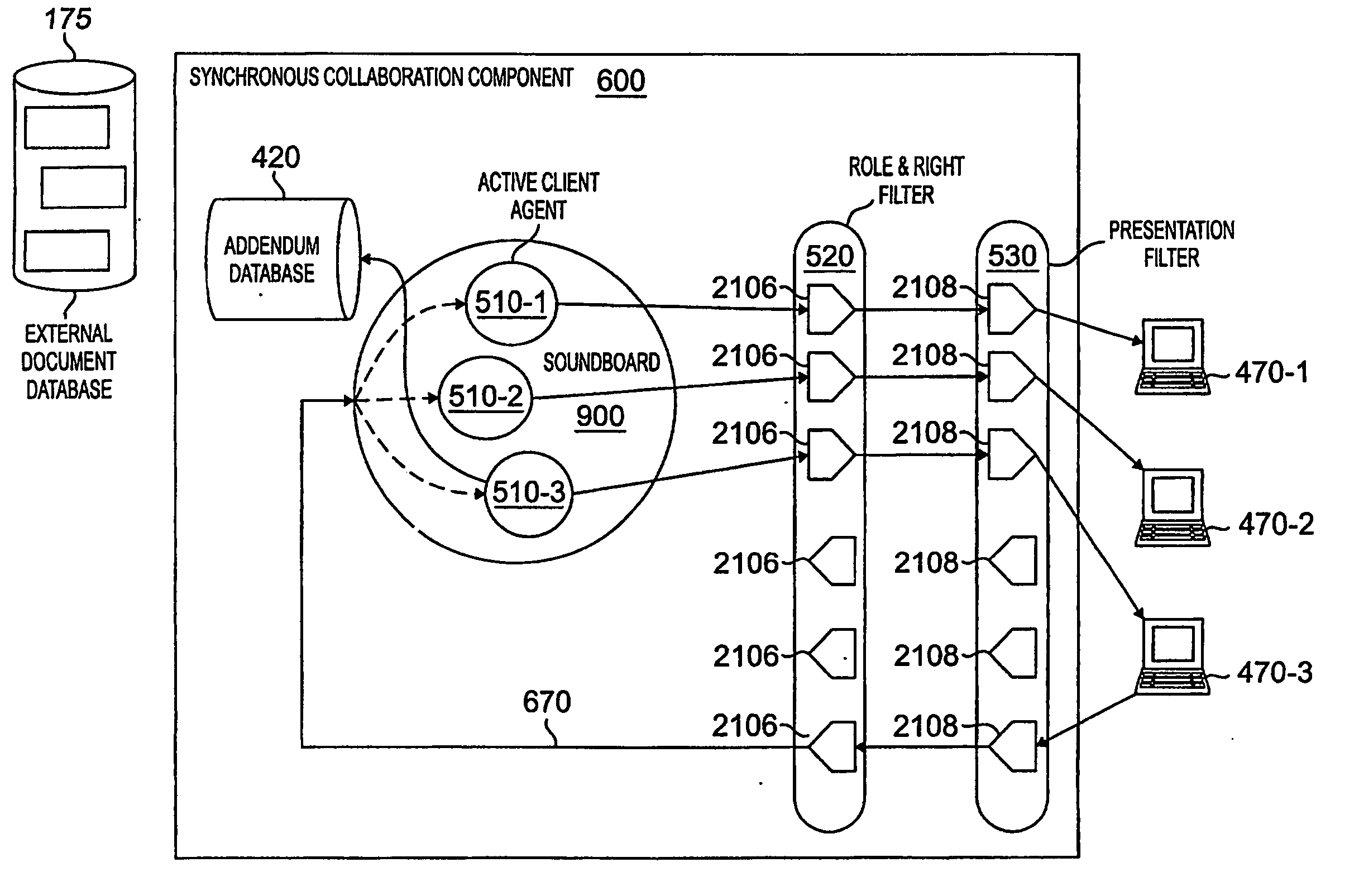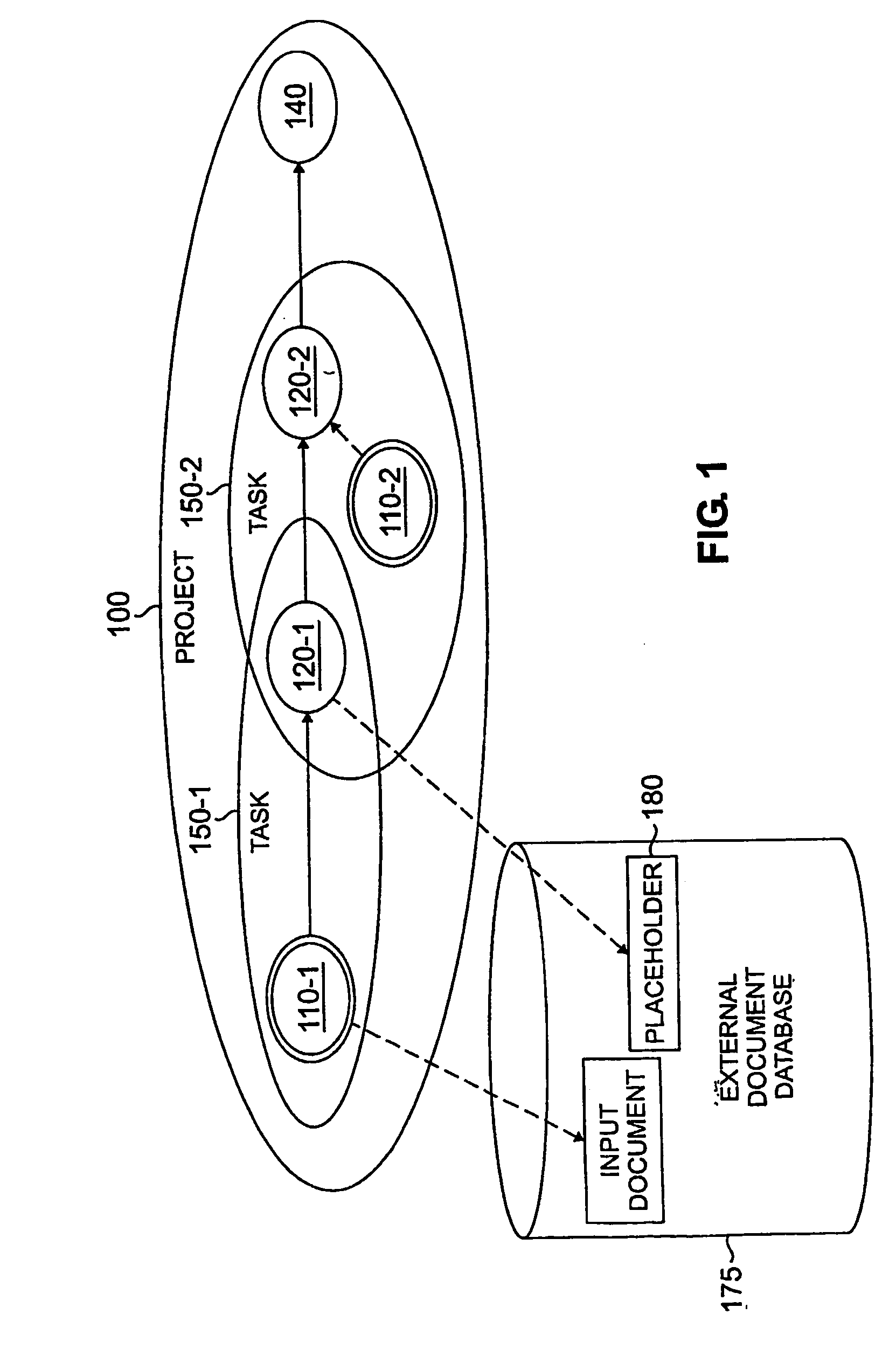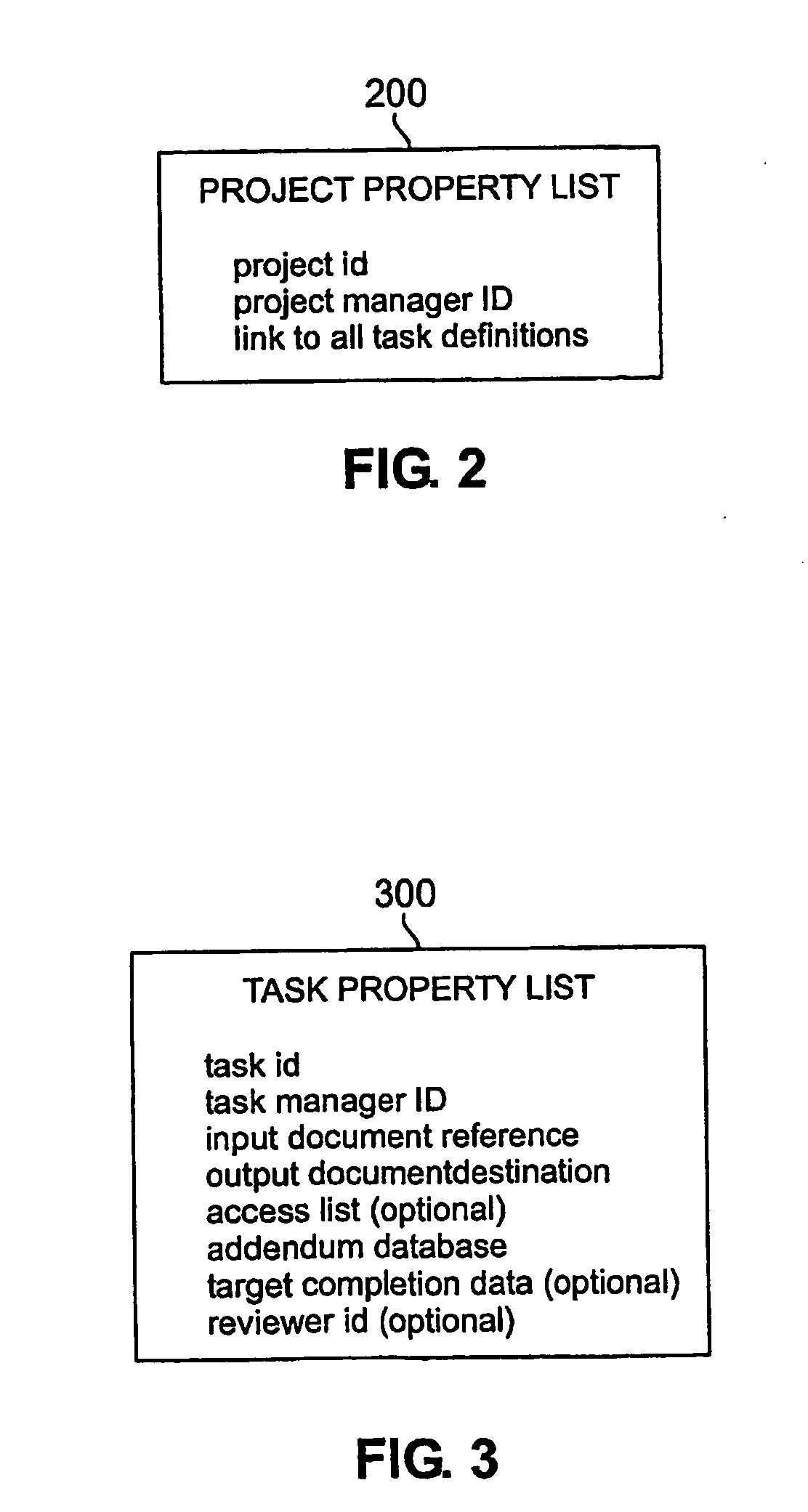Method and apparatus for synchronous project collaboration
a project and project technology, applied in the field of project management systems, can solve the problems of all other team members being unable to manipulate the document, delay before a team member can make a revision, etc., and achieve the effect of easy transition
- Summary
- Abstract
- Description
- Claims
- Application Information
AI Technical Summary
Benefits of technology
Problems solved by technology
Method used
Image
Examples
Embodiment Construction
[0025] As discussed further below in conjunction with FIG. 2, a project 100 is defined by a project property list 200 and comprises one or more connected tasks, such as the tasks 150-1, 150-2. As used herein, a project 100 is an activity that generates one or more output documents 140 from one or more input documents 110, and may also produce one or more intermediate documents 120. A project 100 comprises one or more meetings among one or more team members and documents associated with the project or meetings. The present project management system allows the current version of each document to be shared among each authorized member of a project team.
[0026] As discussed further below in conjunction with FIG. 3, each task 150 is defined by a task property list 300 and comprises one or more defined document derivations. A task 150 is defined as a process to derive one or more output documents 140 or one or more intermediate documents 120 from one or more input documents 110 or interme...
PUM
 Login to View More
Login to View More Abstract
Description
Claims
Application Information
 Login to View More
Login to View More - R&D
- Intellectual Property
- Life Sciences
- Materials
- Tech Scout
- Unparalleled Data Quality
- Higher Quality Content
- 60% Fewer Hallucinations
Browse by: Latest US Patents, China's latest patents, Technical Efficacy Thesaurus, Application Domain, Technology Topic, Popular Technical Reports.
© 2025 PatSnap. All rights reserved.Legal|Privacy policy|Modern Slavery Act Transparency Statement|Sitemap|About US| Contact US: help@patsnap.com



